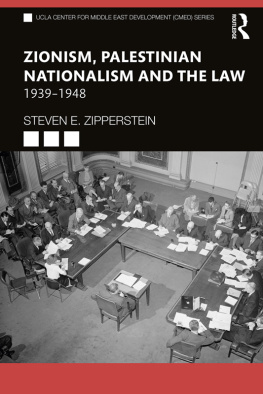AMERICAN WAR PLANS
18901939
OTHER BOOKS BY STEVEN T. ROSS:
European Diplomatic History, 17891815
From Flintlock to Rifle
The French Revolution: Conflict or Continuity?
Quest for Victory: French Military Strategy, 17921799
American War Plans 19411945
American War Plans 19451950
First published in 2002 by Frank Cass Publishers
This edition published 2013 by Routledge
2 Park Square, Milton Park, Abingdon, Oxon OX14 4RN
711 Third Avenue, New York, NY 10017
Routledge is an imprint of the Taylor & Francis Group, an informa business
Copyright 2002 S. Ross
British Library Cataloguing in Publication Data:
Ross, Steven T.
American war plans, 18901939
1. United States Military policy 2. United States History, Military 19th century 3. United States History, Military 20th century
I. Title
355.03357309034
ISBN 0-7146-5305-5 (cloth)
ISBN 0-7146-8270-5 (paper)
Library of Congress Cataloging-in-Publication Data
Ross, Steven T.
American war plans, 18901939/Ross, Steven T.
p. cm.
Includes bibliographical references (p. ) and index.
ISBN 0-7146-5305-5 (cloth). ISBN 0-7146-8270-5 (paper)
1. Military planning United States History 20th century. I. Title
U153 .R67 2002
355.033573dc21
All rights reserved. No part of this publication may be reproduced, stored in a retrieval system or transmitted in any form or by any means, electronic, mechanical, photocopying, recording or otherwise, without the prior permission of the publisher.
This book seeks to examine the development of American war plans from the late nineteenth century to 1939, when the United States evolved from a continental nation into a power with interests that spanned the globe. It places the various war plans within the context of the nations strategic environment, the militarys assessments of threats real or imagined and military capabilities.
In the 1880s the US Army was a small, long-service force. The Army served in scores of small posts primarily in the trans-Mississippi west, manned a number of antiquated coast defense fortifications and worked in a number of administrative bureaus in Washington. Army missions primarily involved policing Native Americans and breaking strikes. In case of war the Army intended to add new recruits to ranks and absorb volunteer units from the state militias, as it had done in the Civil War of recent and revered memory. Thoughtful members of the officer corps sought to enhance professional education and training and in the darkest recesses of their minds dreamed of establishing a Prussian-style military system.
The US Navy consisted of a collection of obsolete vessels serving in small squadrons scattered around the globe. Usually operating as single ships, the Navy sought to show the flag in foreign parts and perhaps convince the rest of the world that the country really did have a strong naval force. In case of war naval strategy involved the time-honored, if unsuccessful, strategy of commerce raiding.
The 1880s were marked by rapid change and improvements in lethality in the weapons of war on both land and sea. Coupled with a renewed burst of European imperialism the world appeared to become a more volatile and dangerous place. Presidents, Congress and influential members of the public became convinced that the United States had to modernize its armed forces. Congress began to authorize the construction of modern warships, and the Army established schools for advanced officer education. The Navy, followed some years later by the Army, established a war college, designed to enhance officer professionalism by examining the art of war at its highest levels. By the start of the twentieth century both services had created general staffs, and both service staffs used their respective war colleges as war-planning agencies.
The SpanishAmerican war led to the creation of an American empire stretching from the Caribbean to the western Pacific. Consequently, the services had to begin drawing up plans for the defense of the new possessions. Moreover, problems of interservice coordination during the war with Spain convinced both military and civilian leaders of the need to create an institution that would enable the services to work together more effectively. The result was the establishment of the Joint Army and Navy Board in 1903. Although the Joint Board, as it was commonly known, had no independent planning authority, it could and did act as a board of final review of plans submitted to it by the individual services.
From 1903 until the United States entry into World War I the Joint Board focused its attentions on a series of war plans designed to protect the nations interests. Planners assigned each major state a color, and logically enough the plans were known as color plans. Planners readily agreed that the major threat to the Monroe Doctrine and American interests in the Caribbean and Latin America was the growing might of the German Empire. The Joint Board, therefore, devoted much effort to producing the Black Plan. The board was, however, unable to agree on a joint plan for the defense of the Philippines and Guam against a possible threat from Japan. Thus, Orange plans of the period contained a major flaw, and this impasse led to a reduction of the Joint Boards influence with the civilian authorities. The board, therefore, played only a marginal role in World War I.
After the war and the rapid reduction of the armed forces, the Joint Board members realized that the US military was entering a period of constrained resources, and that enhanced interservice cooperation was necessary to attain even marginal levels of military proficiency. The reorganized Joint Board gained its own planning staff and several other subordinate agencies. Moreover, the Joint Board could produce its own studies and plans and coordinate the activities of the Army and Navy planners.
Interwar planning fell into two general categories. First, the Joint Board crafted plans designed to meet probable contingencies that the nation might face. These plans ranged from responses to domestic insurrection to invading Mexico. The US military, despite reduced funding and forces, could meet force requirements necessary to execute most of the plans.
Second, the Joint Board produced war plans for major conflicts against Great Britain, Japan and a British-Japanese coalition. The probabilities of such wars were at best remote. Nor did the United States possess the military assets to carry out the plans without massive national mobilization. Plans for a major war were at best training exercises designed to familiarize officers with the range of problems associated with a major conflict. The Depression, which produced even more cuts in defense spending, rendered plans for a major war even less feasible and placed in doubt the ability of the armed services to execute several of the probable contingencies.
The rise of German, Italian and Japanese expansionism coupled with the continuing impact of the Depression drove the nation even further into isolationism. In the 1920s the United States had been deeply involved in world affairs acting on a unilateral basis. By the mid-1930s the nation had taken steps to seal itself off from global economic and political problems. It was not until after the 1938 Munich crisis that military planners began to explore American responses to further initiatives by the revisionist powers.









